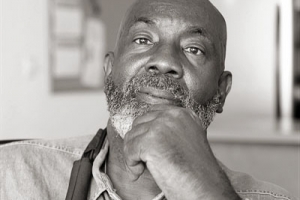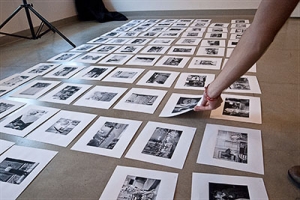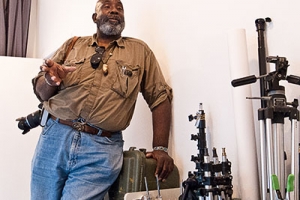An Interview with Eli Reed
David Lykes Keenan’s mentor for FAIR WITNESS
Okay, I’ll quote my Magnum Photos bio. [laughs]
I began photographing in 1970. My work from El Salvador, Guatemala and other Central American countries brought me to the attention of Magnum, one of the premier photo agencies if I do say so myself, in 1982. I became a full member in 1988.
I’ve worked as a stills and specials photographer in the motion picture business. My first book, Beirut, City of Regrets, came out of a long-term project in that city between 1983 and 1987. I’ve also photographed in Haiti, Panama, Hong Kong, China, and who knows how many other far-off lands.
Perhaps I’m best known for my book Black in America where, for more than twenty years ending in the late 1990s, I documented what it is to be African-American.
Now in addition to my work with Magnum and personal projects, I teach photojournalism at the University of Texas at Austin.
Yes. Not many people are doing pictures that are really interesting, doing pictures of what is really going on around them. Looking at Dave’s pictures, there is something in there that strikes a chord within me about a time, a place, and on-going life that I really don’t see, or feel, in a lot of other current photography. It’s not documentary per se, it’s just about life.
I mean that there is a grand tradition (of street photography) and Dave has upped the ante in some ways. When I think about Gary Winogrand or Lee Friedlander and the kind of things they did, it’s like that, Dave’s stuff is, but it’s more today.
I think of my friend Misha Erwitt (son of Elliott) who is a born street photographer out of New York. I mean there are some strong similarities between Misha and Dave. They both make real, honest pictures and there’s not a lot of that going on right now in my opinion.
I think the photographs in FAIR WITNESS, Dave’s book project (the title is drawn from Robert Heinlein’s famous science fiction novel Stranger in a Strange Land) really connect with viewers in a most fascinating way.
I mean, think if an alien came down here to Earth, you know, and just walked among us. How would he see things? I mean how would he make sense of what he is seeing? I think Dave sees the world kind of like that — fortunately for us, he always has a camera with him.
The publishing world is running scared right now. But Dave, and others, need to not pay attention to that and just do the work. And keep beating down doors.
I’ve just seen something produced very recently by Stephen Ferry where he used newsprint to publish some of his photographs to encourage coverage of human rights in Columbia. Pages can be torn out and put up on the wall. This pushes the envelope of publishing.
Stephen and Chris Anderson’s recent book Capitolio about Venezuela remind me that the book market is now more worldwide then what we used to think — it has expanded well beyond the English speaking world.
I mean with strong pictures, you don’t need words. What we see in the pictures anyone anywhere in the world can recognize, they’d be nodding their heads about it, you know?
When I try to think of any photographers doing this type of work, I mean street photographers who have come on the scene recently, say within the past decade, I’d have to say that he’s one of the people leading the pack. Leading the pack by default, perhaps, because no one else comes to mind! [laughs]
When I see Dave’s pictures I think of classic photographers who did work of this type but in a different time and place, different time for sure. Many of those have passed on.
I mean Dennis Stock, in the street. David Alan Harvey, he’s a color photographer who really elevated his game when he joined Magnum. And there’s Bruce Gilden who is always pushing the envelope. Then, of course, there’s Henri Cartier-Bresson back in the 1930s and 40s.
But who has been doing that recently, I mean the decisive moment way of seeing, that Dave has been working on? Hmmmm. I’ve enjoyed following his voices into the void, so to speak, because his pictures have a freshness that don’t see much of any more.
So, yeah, Cartier-Bresson was the ultimate street photographer. And Elliott Erwitt, the same kind of thing. I mentioned Winogrand and Friedlander earlier. People try, people try to do that kind of work but they’re just copying it. When I see people raving about some of this kind of stuff, derivative stuff, I just don’t get it. I really don’t get it at all. I guess it is a reflection that there really is an absence of people out there with something unique to say.
So much of what passes for street photography today is not original. When I think of Leonard Freed and Lee Friedlander, I see an original eye. Dave is in good company here. These guys, all I’ve mentioned, have different styles but they all have an original eye.
Okay, to sum up, I want to go back to my previous Stranger in a Strange Land reference — when I see Dave’s photographs, I see things as I imagine they might be seen by a visitor from outer space who came down to our planet to just look around.
Nothing could be more unique then that alien’s point of view, right? I think that we’re there, there with him, seeing what he sees. A fair witness has come to this time and place, has observed, and has taken something away, you know?



